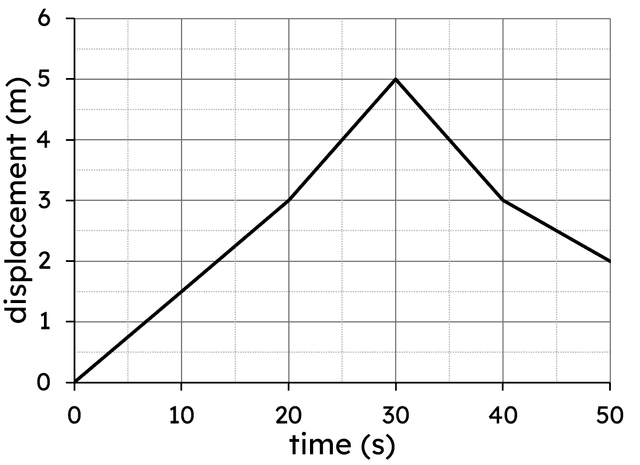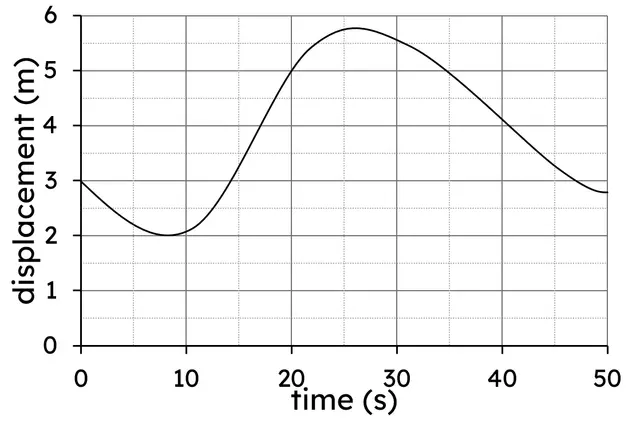Calculating from displacement-time graphs (v = s ÷ t)
I can take readings from displacement-time graphs to find distance, displacement, speed and velocity.
Calculating from displacement-time graphs (v = s ÷ t)
I can take readings from displacement-time graphs to find distance, displacement, speed and velocity.
These resources will be removed by end of Summer Term 2025.
Lesson details
Key learning points
- The velocity of an object is equal to the gradient of a displacement-time graph.
- A direction in which velocity and displacement are measured needs to be chosen.
- A negative gradient on a displacement-time graph (sloping downwards) represents velocity in the opposite direction.
- A negative value for displacement represents a position ‘behind’ the starting position.
Keywords
Displacement-time graph - A displacement-time graph shows the change in displacement over a time period. The displacement along a straight line can be positive or negative.
Gradient - The gradient on a displacement-time graph gives the instantaneous velocity.
Instantaneous velocity - The instantaneous velocity is the velocity of an object at a particular moment in time.
Common misconception
A pair of coordinates on a s-t graph can be used to calculate the instantaneous speed or velocity at that point, but that only works for a straight line graph through the origin.
Ask pupils to calculate the velocity of a graph that represents a steady velocity on a line that does not go through the origin, and to check to see if dividing the values at any point on the line gives the right value for velocity.
To help you plan your year 10 combined science lesson on: Calculating from displacement-time graphs (v = s ÷ t), download all teaching resources for free and adapt to suit your pupils' needs...
To help you plan your year 10 combined science lesson on: Calculating from displacement-time graphs (v = s ÷ t), download all teaching resources for free and adapt to suit your pupils' needs.
The starter quiz will activate and check your pupils' prior knowledge, with versions available both with and without answers in PDF format.
We use learning cycles to break down learning into key concepts or ideas linked to the learning outcome. Each learning cycle features explanations with checks for understanding and practice tasks with feedback. All of this is found in our slide decks, ready for you to download and edit. The practice tasks are also available as printable worksheets and some lessons have additional materials with extra material you might need for teaching the lesson.
The assessment exit quiz will test your pupils' understanding of the key learning points.
Our video is a tool for planning, showing how other teachers might teach the lesson, offering helpful tips, modelled explanations and inspiration for your own delivery in the classroom. Plus, you can set it as homework or revision for pupils and keep their learning on track by sharing an online pupil version of this lesson.
Explore more key stage 4 combined science lessons from the Measuring and calculating motion unit, dive into the full secondary combined science curriculum, or learn more about lesson planning.

Equipment
Licence
Starter quiz
6 Questions
a vector measured in m
a vector measured in m/s
a scalar measured in m
a scalar measured in m/s
Exit quiz
6 Questions
a graph showing distance in a given direction over a period of time
the steepness of a line or slope
how fast an object moves in a given direction
how fast an object moves in a given direction over a period of time






